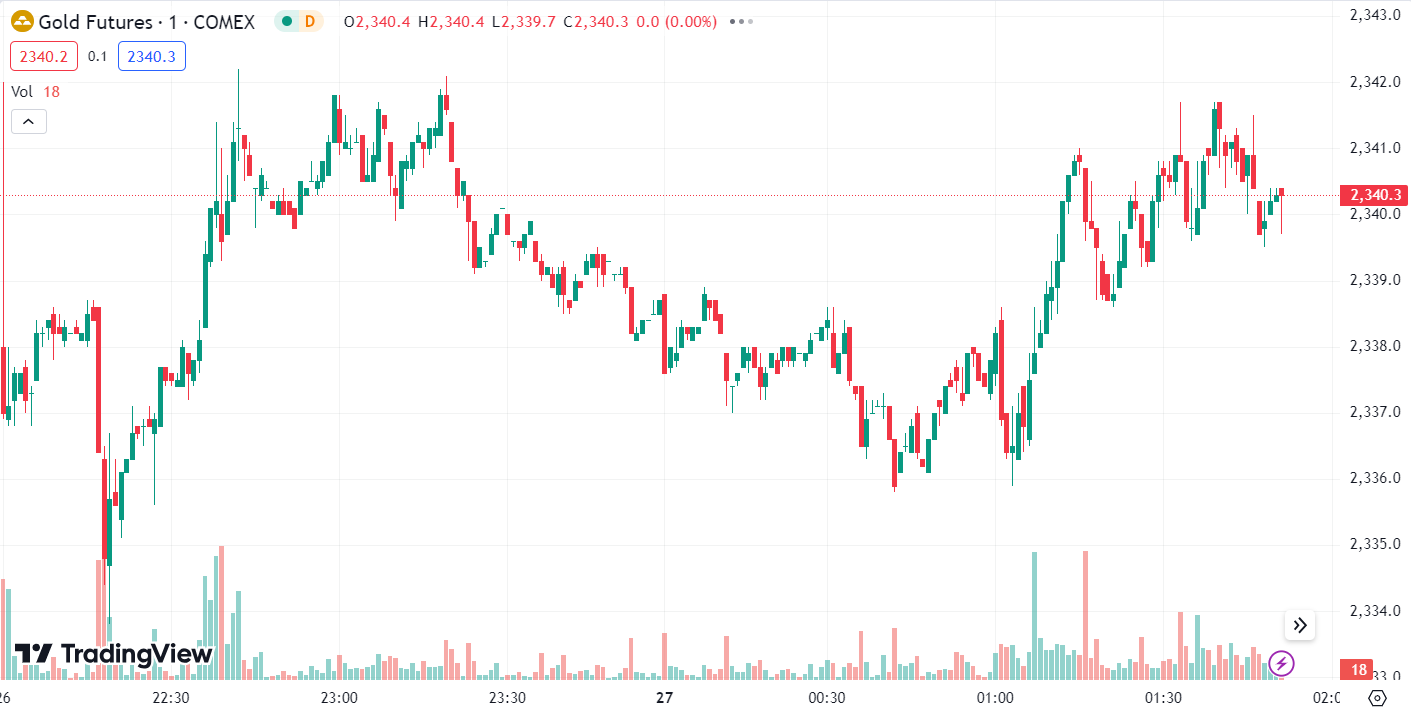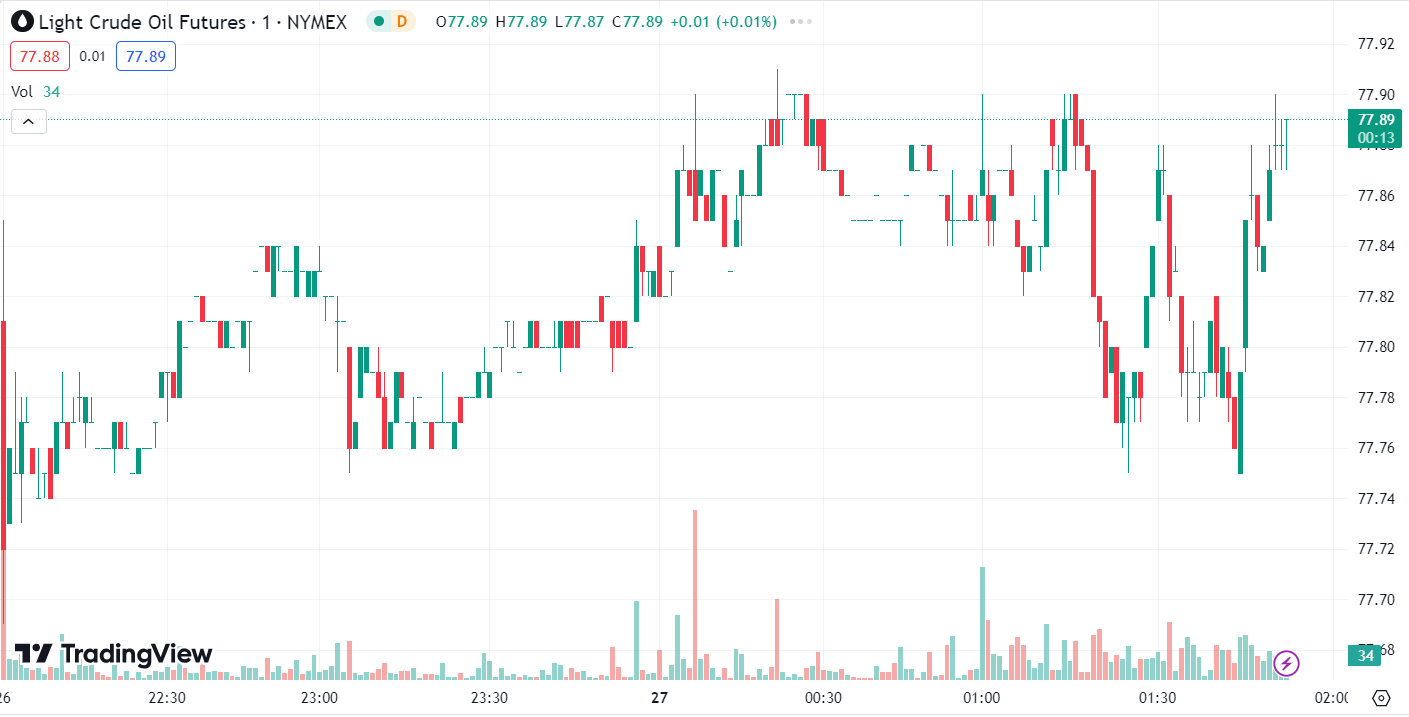
Benefiting from the decline in the dollar, gold prices edged up by 0.23% last Friday. However, due to reduced expectations of a Federal Reserve rate cut, gold prices still marked their largest weekly decline in five and a half months.
The dollar index weakened significantly, and ongoing conflicts between Israel and Gaza, as well as the approaching summer peak season in the U.S., prompted bargain hunting which also provided support for oil prices. Consequently, oil prices rose by about 1% last Friday.
Gold >>
Last Friday, spot gold prices rebounded, aided by a decline in the dollar, ultimately rising by 0.23% to close at USD 2,334.02 per ounce.
However, with diminishing hopes for a Federal Reserve rate cut, gold prices fell by more than 3% over the week, marking their worst weekly performance of the year.
Minutes from the Federal Reserve’s last meeting, released last week, indicated that achieving the 2% inflation target might take longer than expected.
The market currently estimates a roughly 63% chance of a rate cut in November, which could replace September as the anticipated timing for the first rate cut.
This shift has driven up U.S. Treasury yields and strengthened the dollar, thereby weighing down the prices of non-yielding precious metals.
Signs of easing price pressures might rekindle hopes for a Fed rate cut, potentially boosting gold prices. Conversely, if the Personal Consumption Expenditures (PCE) report exceeds market expectations, it could further dampen rate cut prospects, thereby pushing gold prices lower.
The PCE inflation data and comments from Fed officials are likely to influence gold’s trajectory in the coming week. Last Friday, gold prices overall remained in a low, weak oscillation and correction.
During the Asian and European sessions, prices quickly broke below the USD 2,325 mark before stabilizing and recovering. In the afternoon, they further rebounded above USD 2,340, entering a phase of horizontal oscillation.
In the evening U.S. session, prices accelerated upwards, briefly breaking the USD 2,347 resistance before falling back and closing with oscillations.
Technical Analysis:

Today’s short-term strategy for gold suggests prioritizing short positions during rebounds, with long positions considered as a secondary approach during pullbacks.
- Key resistance levels to watch in the short term are around 2350-2355.
- Key support levels to watch in the short term are around 2320-2315.
WTI Crude Oil >>
Last Friday, the U.S. dollar index weakened significantly, and ongoing conflicts between Israel and Gaza, along with the approaching summer peak season in the U.S., prompted bargain buying, providing support for oil prices.
As a result, WTI crude oil rose by 1.1% to close at USD 77.75 per barrel, while Brent crude oil increased by 0.79% to close at USD 82.11 per barrel.
On Monday, trading activity is expected to be somewhat limited due to the Memorial Day holiday in the U.S. Geopolitically, Israel has continued its attacks on Gaza, disregarding the International Court’s ceasefire order.
The market is also anticipating the OPEC+ online meeting on June 2, where discussions will focus on whether to extend the voluntary production cut of 2.2 million barrels per day.
Last Friday, the technical performance of crude oil showed a rapid downward test in the Asian and European sessions, breaking below the USD 76.2 level before stabilizing and rebounding.
In the evening U.S. session, the prices surged upward, breaking through and holding above the USD 77 level, continuing to rise to USD 77.7, closing with a moderate upward correction.
Overall, after four consecutive days of decline last week, the prices saw a rebound and recovery.
Technical Analysis:

Today’s crude oil trading strategy suggests prioritizing short positions during rebounds, with long positions considered as a secondary approach during pullbacks
- Key resistance levels to monitor in the short term are around 78.4-79.0.
- Key support levels to monitor in the short term are around 76.0-75.6.
Forward-looking Statements
This article contains “forward-looking statements” and may be identified by the use of forward-looking terminology such as “anticipate”, “believe”, “continue”, “could”, “estimate”, “expect”, “hope”, “intend”, “may”, “might”, “plan”, “potential”, “predict”, “should”, or “will”, or other variations thereon or comparable terminology. However, the absence of such terminology does not mean that a statement is not forward-looking. In particular, statements about the expectations, beliefs, plans, objectives, assumptions, future events, or future performance of Doo Prime will be generally assumed as forward-looking statements.
Doo Prime has provided these forward-looking statements based on all current information available to Doo Prime and Doo Prime’s current expectations, assumptions, estimates, and projections. While Doo Prime believes these expectations, assumptions, estimations, and projections are reasonable, these forward-looking statements are only predictions and involve known and unknown risks and uncertainties, many of which are beyond Doo Prime’s control. Such risks and uncertainties may cause results, performance, or achievements materially different from those expressed or implied by the forward-looking statements.
Doo Prime does not provide any representation or warranty on the reliability, accuracy, or completeness of such statements. Doo Prime is not obliged to provide or release any updates or revisions to any forward-looking statements.
Disclaimer
While every effort has been made to ensure the accuracy of the information in this document, DOO Prime does not warrant or guarantee the accuracy, completeness or reliability of this information. DOO Prime does not accept responsibility for any losses or damages arising directly or indirectly, from the use of this document. The material contained in this document is provided solely for general information and educational purposes and is not and should not be construed as, an offer to buy or sell, or as a solicitation of an offer to buy or sell, securities, futures, options, bonds or any other relevant financial instruments or investments. Nothing in this document should be taken as making any recommendations or providing any investment or other advice with respect to the purchase, sale or other disposition of financial instruments, any related products or any other products, securities or investments. Trading involves risk and you are advised to exercise caution in relation to the report. Before making any investment decision, prospective investors should seek advice from their own financial advisers, take into account their individual financial needs and circumstances and carefully consider the risks associated with such investment decision.


